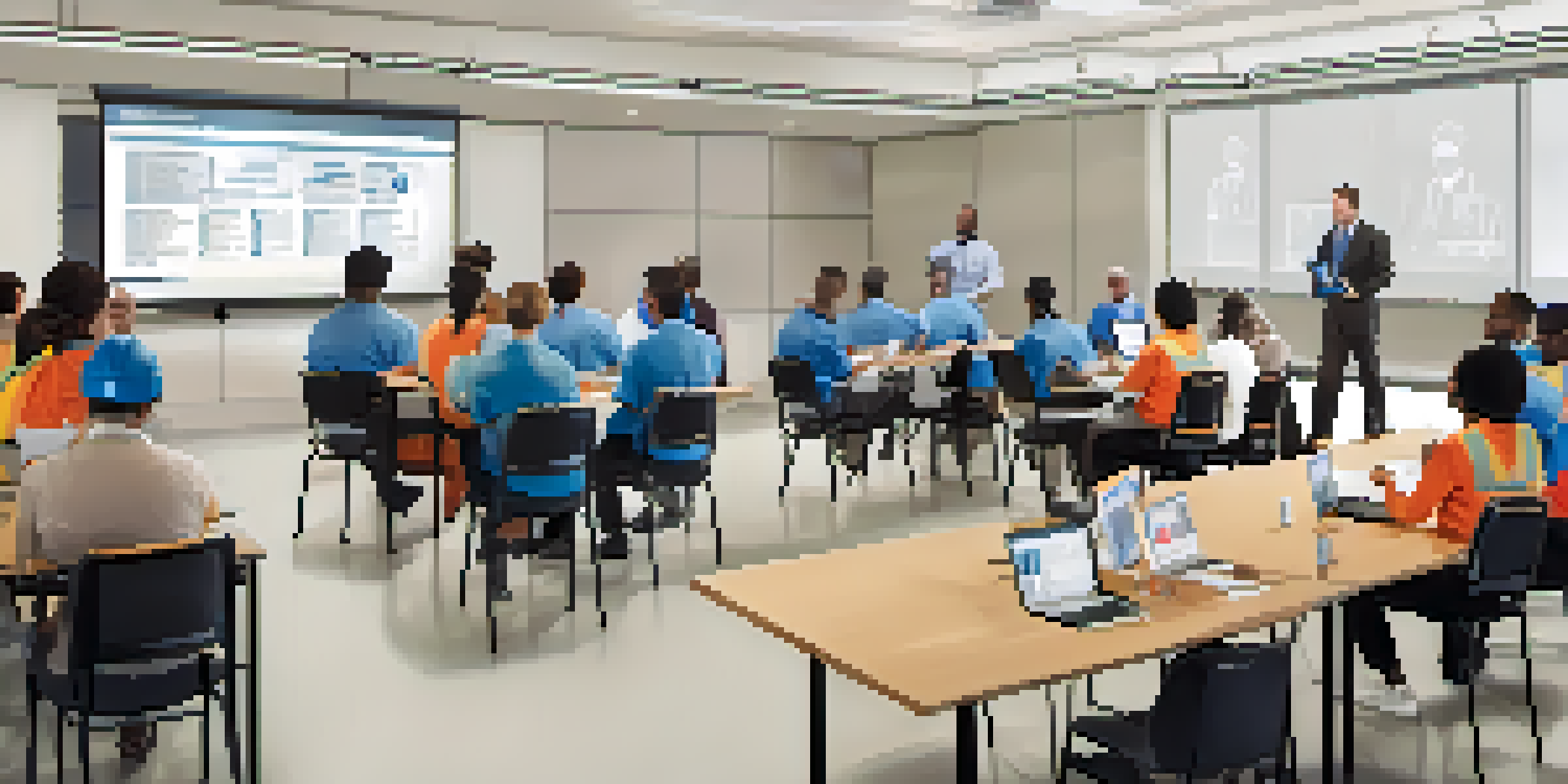Implementing Safety Protocols: A Step-by-Step Guide

Understanding the Importance of Safety Protocols
Safety protocols are essential for maintaining a secure and healthy work environment. They ensure that employees are aware of the risks they face and the precautions they need to take. By implementing these guidelines, businesses can minimize accidents and foster a culture of safety.
Safety isn't just a slogan, it's a way of life.
Moreover, having well-defined safety protocols can significantly improve employee morale. When employees feel safe, they are more likely to be engaged and productive. This sense of security can also result in lower turnover rates, as workers appreciate a company that prioritizes their well-being.
Additionally, adhering to safety protocols can protect organizations from legal liabilities. In the event of an accident, demonstrating that you have established safety measures can mitigate potential repercussions, ultimately safeguarding your business's reputation.
Conducting a Thorough Risk Assessment
The first step in implementing safety protocols is to conduct a comprehensive risk assessment. This involves identifying potential hazards in the workplace, such as equipment malfunctions, slips, or exposure to harmful substances. By understanding these risks, you can create targeted safety measures to address them effectively.

Involve employees in the risk assessment process, as they often have valuable insights into daily operations. Engaging them can lead to a more thorough understanding of the risks present and help in devising practical solutions. This collaborative approach not only enhances the assessment but also fosters a sense of ownership among staff.
Safety Protocols Boost Workplace Morale
Implementing clear safety protocols enhances employee engagement and reduces turnover by fostering a secure work environment.
Once the risks are identified, prioritize them based on their potential impact and likelihood. This prioritization will guide you in developing actionable safety protocols that address the most critical issues first, ensuring an efficient use of resources.
Developing Clear and Concise Safety Protocols
With a solid understanding of the risks, it’s time to develop clear and concise safety protocols. These guidelines should be easy to understand and follow, ensuring that all employees can comply without confusion. Using straightforward language and avoiding jargon will help in making the protocols accessible to everyone.
An ounce of prevention is worth a pound of cure.
It's also important to tailor the protocols to your specific workplace and industry. Different environments may require distinct safety measures; for example, a construction site will have different protocols than an office setting. Customizing your protocols ensures they are relevant and effective.
Consider including visual aids, such as infographics or checklists, to enhance comprehension. These tools can make the protocols more engaging and easier to remember, ultimately contributing to better adherence among employees.
Training Employees on Safety Protocols
Once your safety protocols are in place, the next step is to train your employees. Proper training ensures that everyone understands the protocols and knows how to implement them in their daily tasks. This training can take various forms, including workshops, online courses, or hands-on demonstrations.
Encourage open communication during training sessions, allowing employees to voice concerns or ask questions. This dialogue will not only clarify any uncertainties but also empower employees to take an active role in safety practices. When workers feel involved in the process, they are more likely to take safety seriously.
Risk Assessments Guide Safety Measures
Conducting thorough risk assessments helps identify potential hazards, allowing for the development of targeted safety protocols.
Regular refresher courses can also be beneficial in maintaining awareness of safety protocols. Over time, employees may forget important procedures, so periodic training helps reinforce their importance and keeps safety top of mind.
Implementing Safety Protocols in Daily Operations
Integrating safety protocols into daily operations is crucial for their effectiveness. This means that safety measures should be a part of the workflow rather than an afterthought. For example, incorporating safety checks into the morning routine can help establish a habit of prioritizing safety.
Supervisors and managers play a key role in modeling safe behaviors. By leading by example, they can encourage employees to follow protocols consistently. Recognizing and rewarding safe practices can further promote adherence and create a positive safety culture.
It's also essential to create an environment where employees feel comfortable reporting unsafe conditions or incidents. Encouraging this open dialogue fosters trust and ensures that safety protocols continuously evolve based on real-world experiences.
Monitoring and Reviewing Safety Protocols Regularly
Once safety protocols are implemented, regular monitoring and reviews are vital for their success. This involves assessing how well the protocols are being followed and identifying areas for improvement. Regular check-ins can help catch any lapses early and reinforce the importance of compliance.
Consider using surveys or feedback sessions to gather employee input on the effectiveness of the protocols. Employees often have firsthand experience with challenges that may not be visible to management. Their insights can provide valuable information for refining safety measures.
Continuous Improvement in Safety Culture
Regularly reviewing and updating safety protocols ensures they remain effective and relevant, promoting a proactive safety culture.
Additionally, stay informed about any changes in regulations or industry standards. Ensuring your protocols are up-to-date helps maintain compliance and protects your organization from potential liabilities.
Celebrating Success and Continuous Improvement
Recognizing and celebrating safety achievements can greatly enhance your organization's safety culture. Acknowledging milestones, such as a certain number of accident-free days, can motivate employees and reinforce the importance of safety. Celebrations create a positive environment where safety is valued and prioritized.
Furthermore, view safety as an ongoing journey rather than a one-time effort. Continuous improvement should be the goal; regularly revisiting and updating protocols ensures they remain effective and relevant. This mindset fosters a proactive approach to safety, encouraging employees to stay engaged.

Finally, remind everyone that safety is a shared responsibility. When every employee takes ownership of their role in maintaining a safe workplace, it creates a stronger safety culture that benefits everyone.